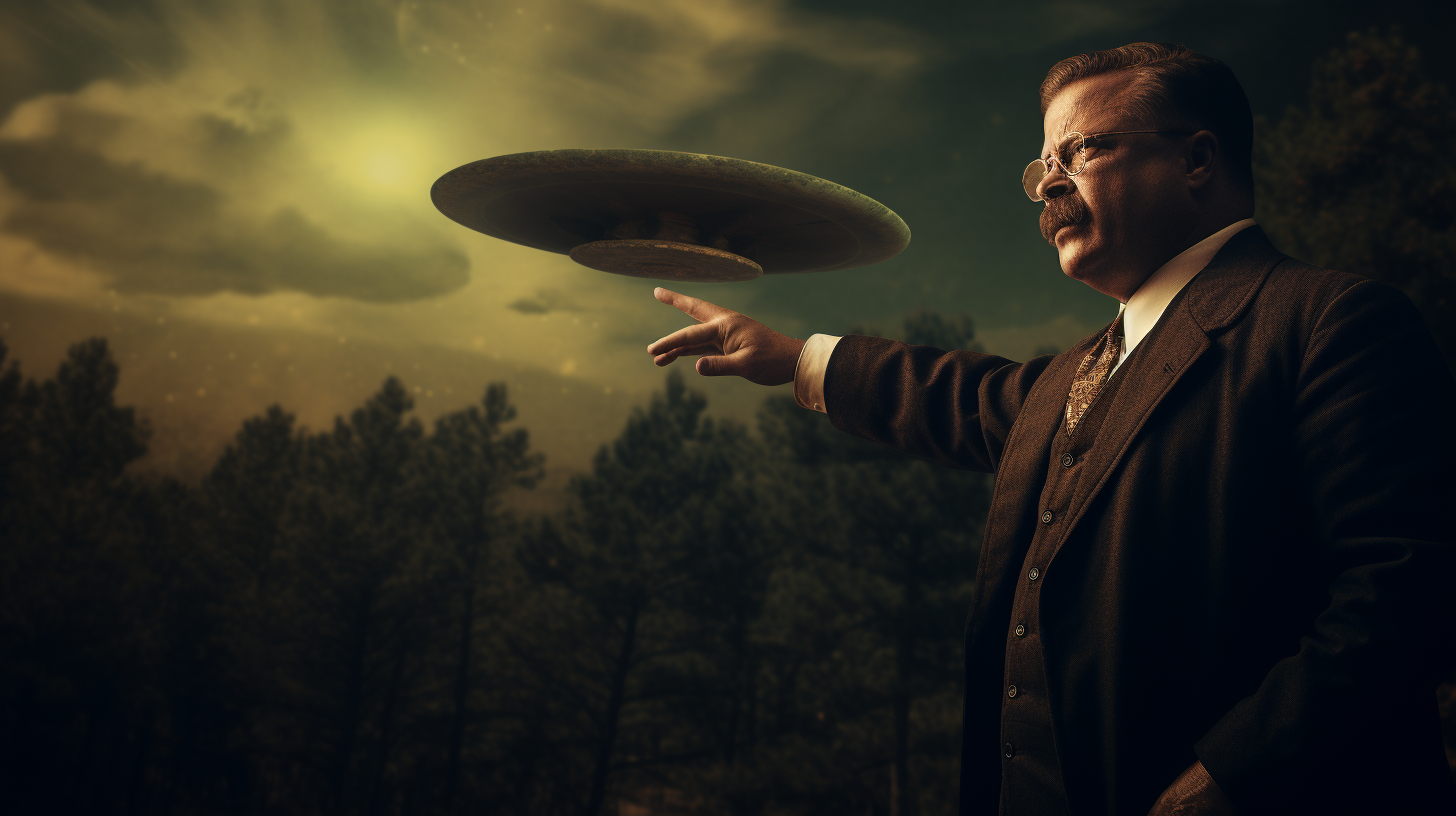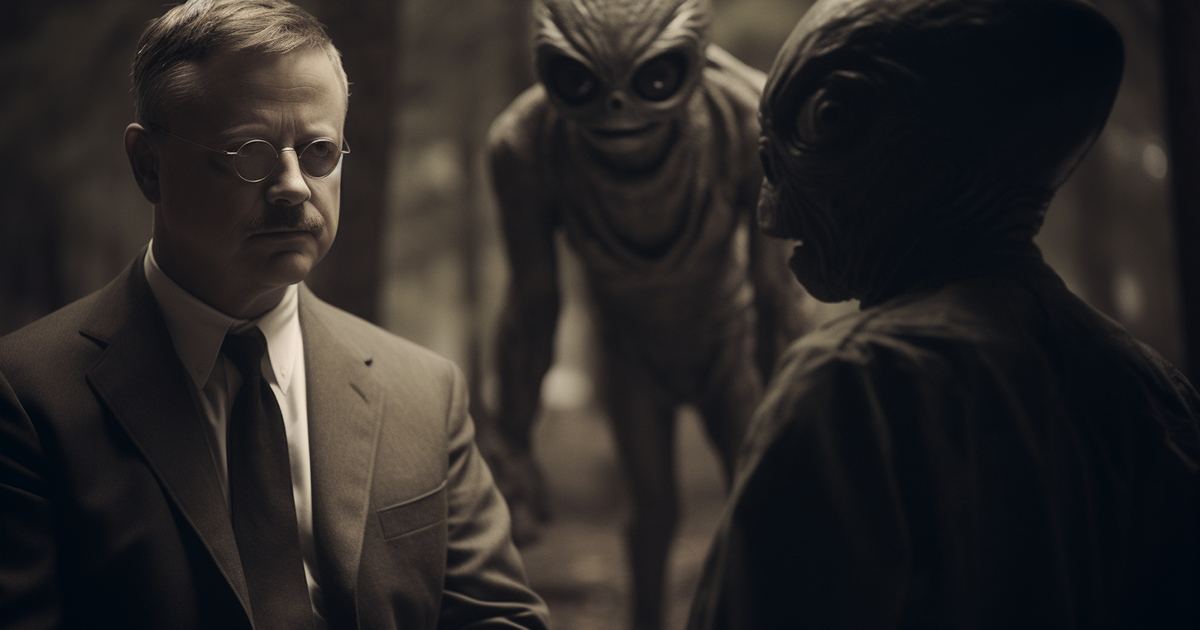In the quiet town of Oyster Bay, Long Island, on August 1st, 1907, something extraordinary occurred at the estate of Theodore Roosevelt, the 26th president of the United States.
It wasn’t a political event or a grand celebration; it was an enigmatic encounter with a celestial visitor. For nearly two hours that evening, dozens of neighbors were left awe-struck as they witnessed a giant orb of light hovering in the sky.
Little did they know that this event, set against the backdrop of a U.S. president working on a pivotal speech, would eventually become an intriguing part of history.
In 1907, Theodore Roosevelt was deeply engrossed in crafting a speech that would outline his strategic vision for the United States. His ambition was to transform the nation’s Navy into a modern powerhouse capable of propelling the United States into a position of global prominence.
This vision would later play a crucial role in the country’s involvement in the First World War, making it a significant turning point in history.
But what makes this UFO sighting even more fascinating is the temporal alignment with Roosevelt’s visionary speech. Were the strange lights over Sagamore Hill merely a coincidental celestial display, or could they have been something more?
Researchers, despite the scarcity of UFO reports in the early 20th century, find this incident compelling for multiple reasons.
Firstly, it’s undeniably intriguing that this event is connected to a U.S. president during such a pivotal moment in history. Secondly, it highlights the rarity of UFO sightings during this period, a sharp contrast to the surge in such reports after World War II.
It’s during this post-war era, under the watch of the 33rd President of the United States, Harry S. Truman, that UFO sightings gained widespread attention.

The Truman Administration was a pivotal period in the annals of ufology. It marked the golden years of “flying saucers,” as they were then called. Events like Kenneth Arnold’s sighting, the Roswell incident, and the infamous Washington merry-go-round of July 1952 thrust UFOs into the public consciousness. During these incidents, strange objects were not only spotted by eyewitnesses but were also tracked by radar at National Airport and Andrews Air Force Base.
The Washington, D.C. sightings were so significant that even President Truman himself couldn’t escape questions about them. Remarkably, he neither denied the possibility of flying saucers nor dismissed them outright.
In his own words, “We discussed it at every conference with the military.” This acknowledgment raises intriguing questions about the government’s involvement and knowledge regarding UFOs.
It’s worth noting that this surge in UFO activity coincided with the onset of the Cold War. The Truman Administration, responding to the looming geopolitical tension, implemented a policy of government secrecy, often referred to as the National Security State.
The National Security Act of 1947 gave birth to the National Security Council and the Central Intelligence Agency, setting the stage for a new era of secrecy.
The decision to increase government secrecy had far-reaching consequences, particularly for the discussion of UFOs. At a critical juncture when UFO sightings were on the rise, Truman’s actions clamped down on open discourse about these enigmatic phenomena.
This moment in history was pivotal, as Truman’s decision set the course for the modern security state and shaped the entire trajectory of the 20th century.
Video:
In retrospect, the Roosevelt UFO encounter of 1907 serves as a captivating prelude to a period when UFOs would become a subject of fascination, debate, and government secrecy. It underscores the intricate relationship between celestial mysteries and the unfolding of human history, leaving us to wonder what other secrets may be hidden in the annals of time.

15 thoughts on “Mysteries in History: The Roosevelt UFO Encounter”
Comments are closed.